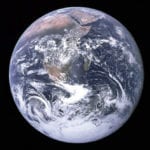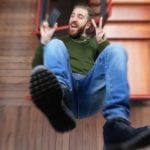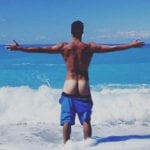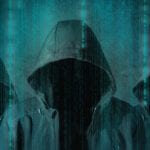 Weird Stuff
Weird Stuff  Weird Stuff
Weird Stuff  Mysteries
Mysteries 10 Tragic Disappearances and Deaths in Joshua Tree National Park
 History
History 10 Ways Childhood Really Sucked in the Old West
 Music
Music 10 Name Origins of Famous Bands from the 1990s
 Religion
Religion 10 Biggest Turnarounds by the Catholic Church
 Weird Stuff
Weird Stuff 10 Unbelievable Times Laws Had Unintended Consequences
 Humans
Humans Ten Historic Women Who Deserve Way More Credit Than They Got
 Movies and TV
Movies and TV 10 Films That Spawned Major Lawsuits
 History
History Ten Times Towns Were Wiped Off the Face of the Earth
 Creepy
Creepy 10 of the Most Disturbingly Haunted Public Houses in the UK
 Weird Stuff
Weird Stuff 10 Niche Subcultures That Are More Popular Than You Might Think
 Mysteries
Mysteries 10 Tragic Disappearances and Deaths in Joshua Tree National Park
 History
History 10 Ways Childhood Really Sucked in the Old West
Who's Behind Listverse?

Jamie Frater
Head Editor
Jamie founded Listverse due to an insatiable desire to share fascinating, obscure, and bizarre facts. He has been a guest speaker on numerous national radio and television stations and is a five time published author.
More About Us Music
Music 10 Name Origins of Famous Bands from the 1990s
 Religion
Religion 10 Biggest Turnarounds by the Catholic Church
 Weird Stuff
Weird Stuff 10 Unbelievable Times Laws Had Unintended Consequences
 Humans
Humans Ten Historic Women Who Deserve Way More Credit Than They Got
 Movies and TV
Movies and TV 10 Films That Spawned Major Lawsuits
 History
History Ten Times Towns Were Wiped Off the Face of the Earth
 Creepy
Creepy 10 of the Most Disturbingly Haunted Public Houses in the UK
20 More Real Pictures Spread Via the Internet
Since the expansion of the Internet, a large collection of shocking photographs have been shared via thousands of different websites. In some cases it can be hard to determine if a picture is genuine, especially with the use of modern day picture editing software. This article will examine 20 famous images that have been spread via the Internet. It is a follow-up to a previous list that examined the same topic. In contrast to the original article, this collection will look at some historical images taken before the Internet was invented. All of the pictures are real, but the true story behind some of the photos is unclear.
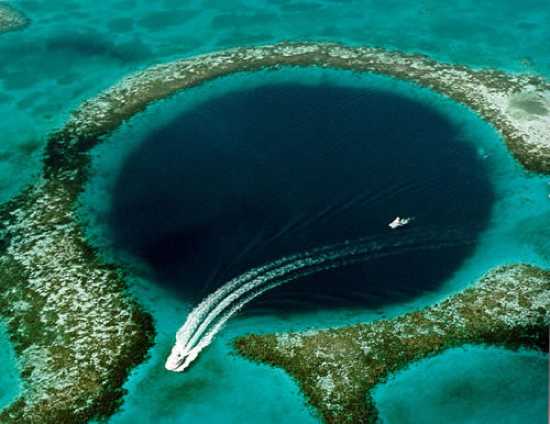
The Great Blue Hole is a large sinkhole off the coast of Belize. It is located near the center of Lighthouse Reef, which is a small atoll 70 kilometers (43 mi) from Belize City. The hole is over 300 meters (984 ft) across and 124 meters (407 ft) deep. It was formed during several episodes of Quaternary glaciations that took place 153,000, 66,000, 60,000, and 15,000 years ago. The site was made famous by Jacques-Yves Cousteau, who declared it as one of the top ten scuba diving areas in the world. In 1971, he brought his ship the Calypso to the hole to chart its depths.
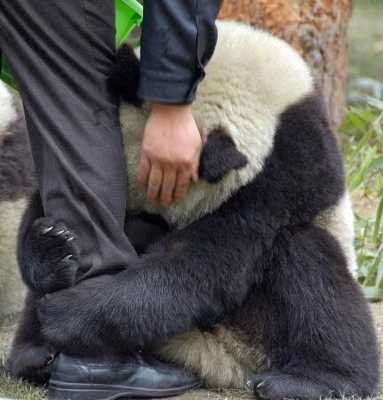
In the aftermath of the 2011 Great East Japan Earthquake, a large collection of photographs and videos surfaced on the Internet. One picture shows a panda hugging the leg of a man. Many tragic images of the tsunami do exist, but this is not one of them. The photo was published in January of 2006, by the English-language version of the Chinese news source People’s Daily Online, as part of an article that describes a giant panda couple going to Taiwan as a goodwill gift. The picture shows a giant panda holding the leg of its feeder at the Chinese Panda Protection Center in Wolong, southwest China’s Sichuan Province.
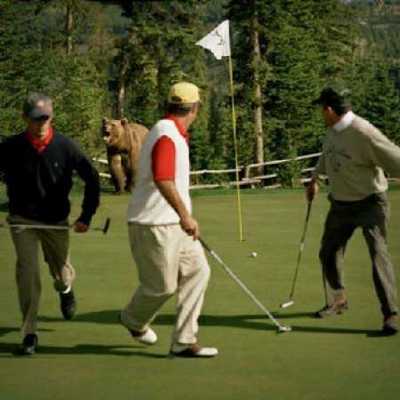
In North America, grizzly bears are found only in Alaska, western Canada, Idaho, Montana, Washington and Wyoming, extending as far south as Yellowstone and the Grand Teton National Park. In 2005, a man named Charles Lindsay was at the Yellowstone Club golf course in Big Sky, Montana, when he captured a picture of a grizzly bear on the 9th green. The bear jumped over a fence and scared a group of golfers. Lindsay was at the course in hopes of getting a picture of a cougar or bear. The photo was used in a book titled Lost Ball: Great Holes, Tough Shots, and Bad Lies, and went viral in 2005.

Zhenli Ye Gon is a Mexican businessman of Chinese origin who has been accused of trafficking pseudoephedrine, or ephedrine precursor chemicals, into Mexico from Asia. He is a legal representative of the Unimed Pharm Chem México Corporation. From 2002-2004, the company was authorized by the Mexican government to import thousands of metric tons of pseudoephedrine and ephedrine products into Mexico, as a part of its vast importation business. However, in July 2007, the U.S. government filed an indictment against Zhenli Ye Gon, and accused him of a conspiracy to aid and abet the importation of methamphetamine into the United States. Two years later, the U.S. case was dismissed.
In March 2007, the Mexican government entered Mr. Ye Gon’s home in Lomas de Chapultepec, Mexico City, and seized hundreds of millions of dollars in assets. In all, the government seized $207 million U.S. dollars, 18 million Mexican pesos, 200,000 euros, 113,000 Hong Kong dollars, 11 centenarios (Mexican gold bullion coins made of 1.20565 oz t (37.5 g) of pure gold), and a large amount of jewels of unknown value. Also confiscated were two Mexican-style dwellings of approximately 20 million pesos, 1 lab, and 7 vehicles. A poll taken by the daily newspaper, Reforma, found that most Mexicans either believe Ye Gon’s story that he was framed by government officials or neither side of the issue. Bumper stickers that read “I believe the Chinaman” are for sale. In 2007, an image of the seized money quickly went viral.

In 1957, an unusual photograph was taken by a man identified only as B.C. According to the back story, B.C. and his fiancée were riding their Harley Davidson through the southern Sierra Nevadas near modern day Lake Isabella, California, when they decided to take some pictures. The couple didn’t notice anything out of the ordinary at the time. However, when the color slides were later developed, one of the pictures had a bizarre light on it. B.C.’s first reaction was to accuse Kodak film lab of playing a trick on him, but they denied any alteration. The slide was then taken to the Los Angeles office of Time Life Magazine and, according to their tests, the picture was genuine and the light was not a lens flare, an acid splash, or a double exposure.
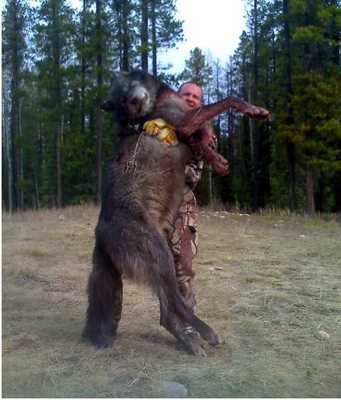
The heaviest recorded gray wolf in North America was killed on 70 Mile River in east-central Alaska on July 12, 1939, and weighed 79.4 kilograms (175 lb). Back in 1995, the U.S. Fish and Wildlife Service introduced 35 Canadian gray wolves into central Idaho and the Yellowstone area of Wyoming. Since that time the animals have multiplied and are moving in huge packs. It has been estimated that there are well over 2000 gray wolves in Idaho, Wyoming and Montana. Since 2009, a large collection of images have appeared online that document giant wolves. The selected picture shows an approximately 180-pound male Canadian gray wolf that was shot near central Idaho. In the United States you can hunt wolves in Alaska, Montana and Idaho.
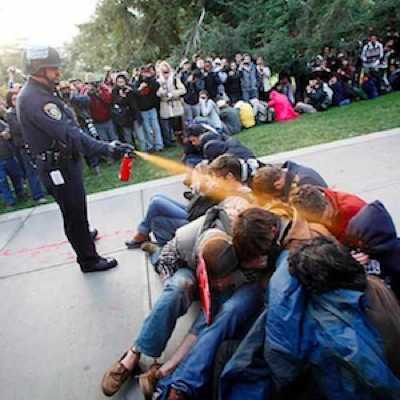
Occupy UC Davis is a series of demonstrations at the University of California, Davis, that gained international attention on November 18, 2011, after a video and pictures of University police officers pepper-spraying a group of students went viral. During the incident, police arrived at the scene wearing riot gear and began removing tents and arresting people. A group of demonstrators staged a sit-in on the walkway in the quad, linking their arms together and refusing to move.
In response to the activity, two officers began spraying pepper spray directly in the faces of the non-violent, sitting students. Bystanders recorded the incident with their cell phone cameras, while members of the crowd chanted “Shame on you” and “Let them go” at the police officers. According to university officials, the police felt like they were surrounded by the demonstrators. The New York Times has indicated that there are multiple videos that show a peaceful demonstration and unlawful use of force.

On December 26, 2004, a massive undersea megathrust earthquake occurred off the west coast of Sumatra, Indonesia. The quake triggered a series of devastating tsunamis, killing over 230,000 people in fourteen countries. It also devastated the animal populations of the area. During the event, a baby hippopotamus, nicknamed Owen, was separated from his family and swept down the Sabaki River into the Indian Ocean. He was then swept back to land when the tsunami hit the Kenyan coast.
While in the water, Owen was rescued by wildlife rangers and taken to Haller Park, which is a wildlife sanctuary in the coastal city of Mombassa, Kenya. As soon as he was placed in his enclosure, the young hippopotamus ran over to greet a giant tortoise named Mzee. Mzee is estimated to be 100-130 years old. Within days of their meeting, the pair had forged a friendship, eating and sleeping together. Owen has since been seen licking the tortoise, who he regards as his new mother.
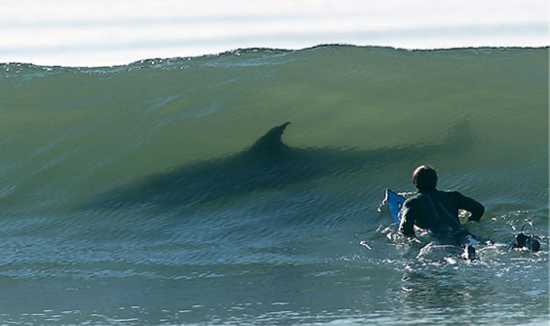
Adult dolphins range in length from 2 to 4 meters (6.6 to 13.2 ft), and in weight between 150 and 650 kilograms (330 and 1,400 lb). Adult great white sharks on average are 4 to 5.2 m (13-17.1 ft) long and have a mass of 680-1,100 kilograms (1,500-2,400 lb). In April of 2003, photographer Kurt Jones captured a picture at Surfrider Beach in Malibu, California, that shows a surfer coming upon a dolphin. The photo went viral with a description that the creature was a great white shark. This of course is false. However, it is a great picture, with perfect timing, color, and camera angle.
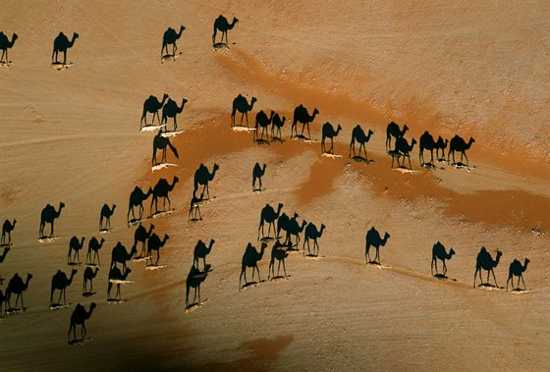
This beautiful overhead image shows the shadows of a group of camels as they travel across the desert. If you look closely you will see that the black color is the camel’s shadows. The hilly desert terrain, along with the sun and camera angle creates an illusion in the photo. The picture was considered one of the best of 2005 and was taken by George Steinmetz, whose work has been featured on the cover of National Geographic. Steinmetz is best known for science photography. In order to achieve his vision, George travels the world to remote deserts, obscure cultures, and new developments to capture one-of-a-kind photographs.
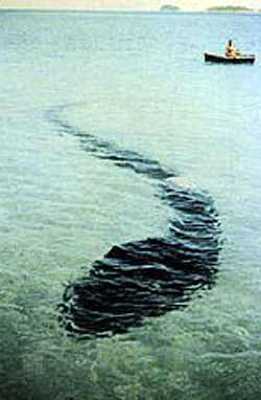
Hook Island is one of the Whitsunday Islands off the coast of the Australian state of Queensland. The island is almost completely uninhabited, and quite rugged. In the early 1960s, a man named Robert Le Serrec captured an image of a huge, tadpole-like creature near Hook Island. The picture was first published in March 1965. A detailed account of the case was written up by Heuvelmans (1968). It is claimed that Serrec and his family witnessed the creature on the lagoon floor after becoming wrecked on the Great Barrier Reef. There is no doubt that the image is real, but many people feel the event was hoaxed by Robert Le Serrec. It has been suggested that he used a weighted down plastic sheeting to create the illusion of a large sea snake.

Reynaldo Dagsa was a Filipino politician. He served as councilman for Barangay 35 in Maypajo, Caloocan, until his assassination on January 1, 2011. Dagsa’s death achieved notoriety due to the fact that he was in the process of taking a New Year’s Day family photo on Tuna Street when he was killed. The picture inadvertently captured the faces of both his killer and a lookout for the killer. The shooter was quickly identified as a convicted robber who was out on parole, named Michael Gonzales. The lookout was a man named Rommel Oliva. Gonzales pointed the gun directly at Dagsa seconds before the picture was taken. Dagsa was rushed to Martinez Hospital but was pronounced dead from a .45-caliber gunshot wound to the head. The image was given to Caloocan city police and the two suspects were arrested in connection with the murder.
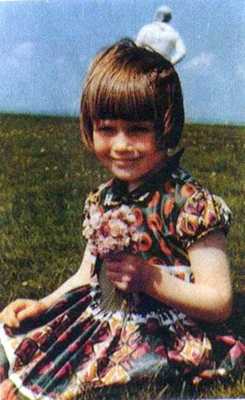
The Solway Firth Spaceman refers to a photograph taken by Jim Templeton in 1964, at Burgh Marsh, situated near Burgh by Sands and overlooking the Solway Firth in Cumbria, England. Templeton claims the picture shows a background figure wearing a space suit and insists that he did not see anyone present when the photograph was taken. The image has attracted interest from ufologists and has become a source of international fascination. Templeton insists that he did not see the figure until after his photographs were developed, and analysts at Kodak confirmed that the picture was genuine.
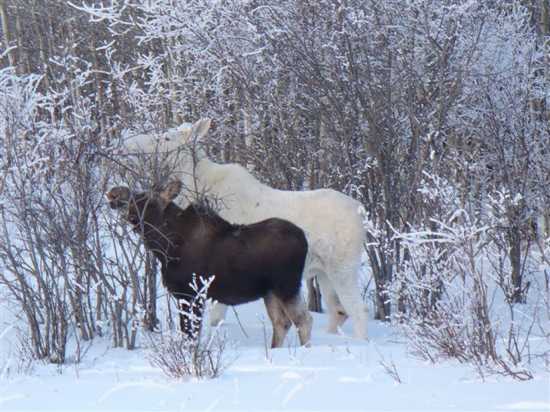
In the last couple years, a collection of photographs showing white moose have gone viral over the Internet. The first case took place in 2007, when an unknown photographer captured two albino moose along a roadside in eastern Canada. It is not clear exactly where the pictures were taken, but it appears to be in Ontario, Newfoundland or New Brunswick. In 2009, a second set of pictures showing a single white moose appeared online under the heading “Beautiful Snow Moose.” The pictures are genuine, but the animals are probably not true albinos but rather white-haired moose. A moose can be born with an unusual genetic variation of white hair. It has been estimated that 1 in 100,000 moose have white hair.
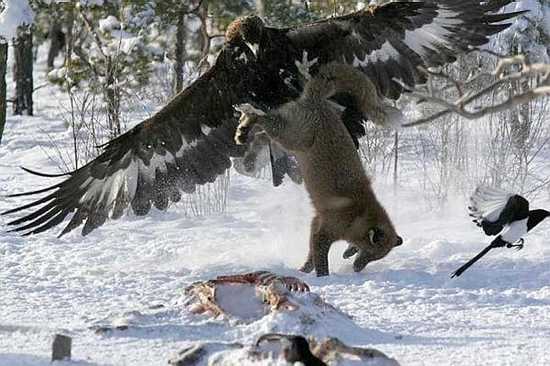
The Golden Eagle is one of the best known birds of prey in the Northern Hemisphere. They have been known to attack and kill foxes, wild and domestic cats, mountain goats, ibex, young deer and even fully grown roe deer. The Eurasian subspecies is used to hunt and kill wolves in many native communities. This photo was taken by Finnish photographer Pekka Komi in February of 2006. It was not captured “by a hunter in Montana” as the original mass email claimed, but rather by Komi, in South Finland. The full series of pictures show that the fox came across the eagle while feeding and a scuffle ensued. The eagle then grabbed the fox. After the picture was taken, the fox was able to break free and run away.

In September of 2011, a series of images surfaced on the Internet that shows a massive crocodile that was captured in the Philippines. The creature is one of the largest crocodile ever recorded and measures 21 feet (6.4m) long. It weighs one ton and was hunted over a three-week span by a massive 100 man team. The crocodile was captured because it was thought to have been responsible for the death of a fisherman. The creature lived in a river system in Agusan, which is a poverty-stricken region 500 miles south east of Manila.
The reptile was a constant worry for villagers. Nobody was brave enough to capture it until the creature was viewed as a threat to humans. In order to get the crocodile alive, the villagers set four net traps made of steel cables. After it was captured, the crocodile was moved by over 100 people to land. Despite the suspected death of the fisherman, the reptile is destined for fame. It is expected to be the star attraction at a new eco-tourism park that is being set up in Agusan. In 2011, a picture of the Mayor of Agusan del Sur Province with the crocodile went viral.
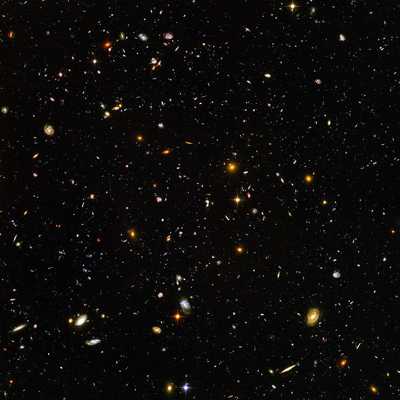
The Hubble Ultra-Deep Field (HUDF) is an image of a small region of space in the constellation Fornax. The picture was composited from data taken from the Hubble Space Telescope, in 2003 and 2004. It is the deepest image of the universe ever taken. HUDF was captured in a section of the sky with a low density of bright stars, which allowed for better viewing of dimmer, more distant objects. It has been estimated that the HUDF photograph shows 10,000 galaxies. This high-resolution image includes galaxies of various ages, sizes, shapes and colors.
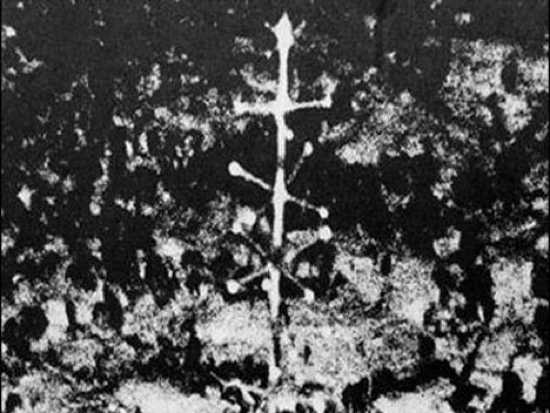
Eltanin Antenna is the name given to an unusual object photographed on the sea floor by the Antarctic oceanographic research ship USNS Eltanin in 1964. The picture was taken while the vessel was west of Cape Horn. After analysis it was determined that the object is two-to-three-feet high and has six main crossbars spaced evenly up its stem. Each set of crossbars has a small ball at the end of each arm. The antenna-like structure is located in an upright position at a depth of 12,808 feet (3,904 meters). The discovery has caused proponents of fringe and UFO-related theories to suggest it might be an extraterrestrial artifact.
One of these people is Bruce Cathie, who has devised a Planetary Grid System around the object. His work is in the same vein of research as Einstein’s “unified field theory,” where gravity, time and space, and their relation therein can all be expressed in one equation. His central thesis is that the laws of mathematics describe a grid-like pattern on the earth that powers flying saucers and controls the dates and places where nuclear bombs can function. Cathie claims that nuclear weapons can only be detonated at two times during the year when the sun is in the correct position. Since the discovery of the Eltanin Antenna a collection of articles have been printed that suggest the picture shows Cladorhiza concrescens, which is an unusual carnivorous sponge.

On September 21, 1979, The Clash performed at The Palladium in New York City during their Clash Take the Fifth U.S. tour. During the concert, a woman named Pennie Smith captured a famous photograph of Paul Simonon smashing his bass guitar against the stage. The image was used as the cover of the 1979 Clash album, London Calling. It was later voted the best rock and roll photograph of all time by Q (magazine). Originally Smith did not want the picture to be used because she felt it was not a technically good shot because it is slightly out of focus (as she was backing away from Paul to avoid getting hit).
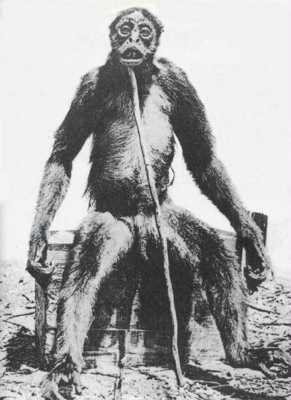
Ameranthropoides loysi (De Loys’ Ape) is allegedly a large primate encountered by François De Loys during his 1917-1920 expedition in search of petroleum, in an area along the border between Colombia and Venezuela, primarily near Lake Maracaibo. The expedition was unsuccessful, and furthermore, it suffered greatly due to disease and skirmishes with natives. Of the 20 members of the group, only four survived. According to de Loys’ 1920 report, while the group was camped near the Tarra River, two large creatures approached them. Initially, the men thought the animals were bears, but then they noticed their bizarre appearance. The creatures, one male and one female, seemed angry and howled at the expedition, they defecated into their hands and flung it at the men.
Fearing for their safety, the expedition shot and killed the male. The female then fled into the woods. De Loys and his companions recognized that they had encountered something unusual. In some ways the animal resembled a spider monkey, but it was much larger: 1.57 meters (5.1 feet) tall. De Loys also counted 32 teeth (most New World monkeys have 36 teeth), and noted that the creature had no tail. The men posed the animal by seating it on a crate and propping a stick under its chin. After taking a single photograph, de Loys reported that they skinned the creature and intended to keep its hide and skull. However, both items were later abandoned by the troubled expedition. Apart from the testimony of the eyewitnesses, the only evidence of the animal is one photograph.
Controversy over the authenticity of the creature continues, with critics contending that it is a hoax and a posed spider monkey carcass. Others have argued that the men could have encountered an unknown species. The crate the creature was posed on was similar to ones commonly used for transporting gasoline, which measured just less than 18 inches (45.7 cm) tall. Assuming this crate was the common type. Its size would appear to support de Loys’ measurement of the creature. Researcher Michael Shoemaker argues that the animal has some pronounced differences from a monkey in its chest, hands, face, underbite, and most importantly it has a much higher forehead than any other known ape.
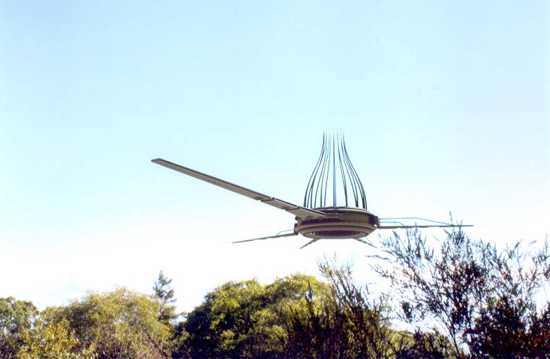
In 2007, a series of photographs surfaced on the Internet that shows a bizarre aircraft hovering in different areas of California. According to various accounts, the object was almost completely silent and moved very smoothly. It was witnessed moving slowly until it took off in the blink of an eye. In April, May and June of 2007, the object was photographed in Lake Tahoe, Capitola, and Big Basin, California. Each account is strange, but the pictures are yet to be authenticated by any type of authority and could be fabricated.



